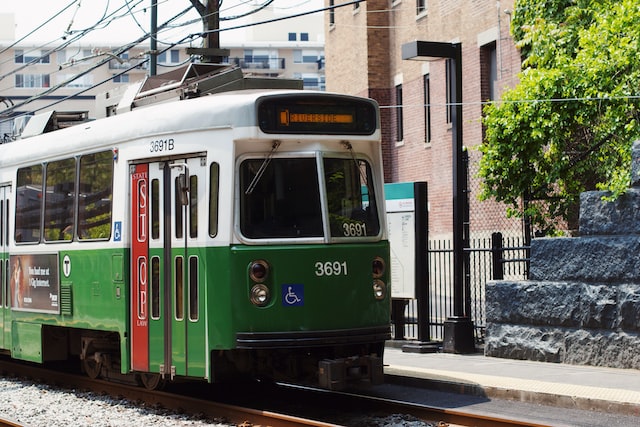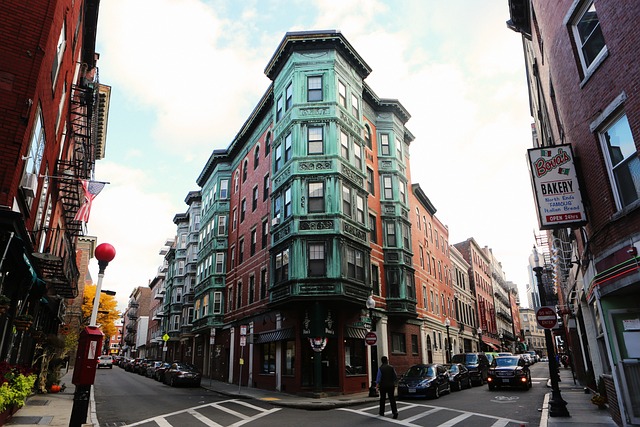
Homes for rent: Boston South End Apartments for Rent
Homes for sale: Boston South End Homes for sale
About Boston South End Massachusetts
The South End is a neighborhood in Boston, Massachusetts, located south of downtown and east of the Back Bay. It is a diverse and lively neighborhood known for its Victorian brownstone houses, tree-lined streets, and vibrant arts and culture scene. The South End is home to a number of galleries, theaters, and other cultural institutions, as well as a variety of restaurants, cafes, and shops. It is also a popular destination for those interested in history, as the neighborhood is home to a number of historic landmarks, such as the Boston Center for the Arts and the Church of the Advent. The South End is easily accessible by public transportation, including the MBTA's Green Line and Silver Line, as well as several bus routes.
History
The South End is a neighborhood in Boston, Massachusetts with a rich history dating back to the early 19th century. The neighborhood was originally developed as a residential area for the city's growing middle class in the 1830s and 1840s. It was designed as a grid of streets with rows of handsome brick and brownstone townhouses, many of which still stand today.
In the late 19th and early 20th centuries, the South End experienced a period of decline, as many of its residents moved to other parts of the city or to the suburbs. However, in the mid-20th century, the neighborhood began to gentrify, as artists and young professionals moved in and renovated many of the old houses. Today, the South End is a diverse and vibrant neighborhood known for its cultural institutions, restaurants, and shopping, as well as its historic architecture.

Things to do in Boston's South End, MA
There are many things to do in the South End neighborhood of Boston, Massachusetts. Some popular activities include:
- Explore the neighborhood's historic architecture: The South End is known for its beautiful Victorian brownstone houses, many of which have been preserved and renovated. Take a stroll through the neighborhood to admire the architecture and learn about the area's history.
- Visit a museum or cultural institution: The South End is home to a number of cultural institutions, including the Boston Center for the Arts, the Boston Ballet, and the Fensgate Cultural Alliance.
- Shop and dine: The South End is home to a variety of independent boutiques, antique stores, and specialty shops, as well as a number of excellent restaurants and cafes.
- Attend a performance: The South End is home to a number of theaters and performance venues, including the Calderwood Pavilion at the BCA and the Boston Opera House.
- Take a walk in a park: The South End is home to several parks and green spaces, including Blackstone Square, Worcester Square, and the Southwest Corridor Park, which offers walking and biking trails and beautiful gardens.
Transportation
The South End neighborhood of Boston is well-served by public transportation. The neighborhood is accessible by the MBTA's Green Line and Silver Line, as well as several bus routes. The Green Line has several stops in the South End, including Massachusetts Avenue, Back Bay, and Symphony stations. The Silver Line serves the neighborhood via the Washington Street corridor, with stops at Silver Line Way, Union Park Street, and Massachusetts Avenue.
In addition to public transportation, the South End is also served by several major roads, including Massachusetts Avenue, Tremont Street, and Columbus Avenue. The neighborhood is easily accessible by car and is also bike-friendly, with designated bike lanes and a number of bike-sharing stations. The South End is also located near several major highways, including Interstates 90 and 93, making it easy to get to and from the neighborhood by car.
Education
The South End neighborhood of Boston is home to several schools and educational institutions, both public and private.
Public schools in the South End are managed by the Boston Public Schools district. The neighborhood is home to several public elementary schools, including the John D. O'Bryant School of Mathematics and Science, the James P. Timilty Middle School, and the UP Academy Dorchester. There are also several public charter schools in the South End, including the City on a Hill Charter Public School and the Codman Academy Charter Public School.
The South End is also home to a number of private schools, including the Boston Montessori School, the Boston School for the Arts, and the Community Music Center of Boston. The neighborhood is also home to a campus of the Massachusetts College of Art and Design, as well as a number of other higher education institutions.
Overall, the South End is a neighborhood with a strong commitment to education and a wide range of options for students of all ages.
Living in Boston's South End
The South End neighborhood of Boston is a vibrant and diverse community with a rich history and a thriving arts and culture scene. It is known for its beautiful Victorian brownstone houses and tree-lined streets, as well as its excellent restaurants and shops.
Living in the South End has a number of benefits, including easy access to public transportation, a wide range of housing options, and a strong sense of community. The neighborhood is home to a mix of families, young professionals, and artists, and it has a thriving LGBTQ+ community.
One of the main drawbacks of living in the South End is the cost of housing. The neighborhood is one of the most expensive in Boston, with high real estate prices and rent costs. However, the neighborhood's close proximity to downtown Boston and its many amenities make it a popular choice for those who can afford it.
Overall, living in the South End is a unique and enjoyable experience, offering a combination of urban living and neighborhood charm.
Homes for rent: Homes for rent in Boston South End, Massachusetts
Homes for sale: Homes for sale in Boston South End, Massachusetts
Official Link: https://www.boston.gov/